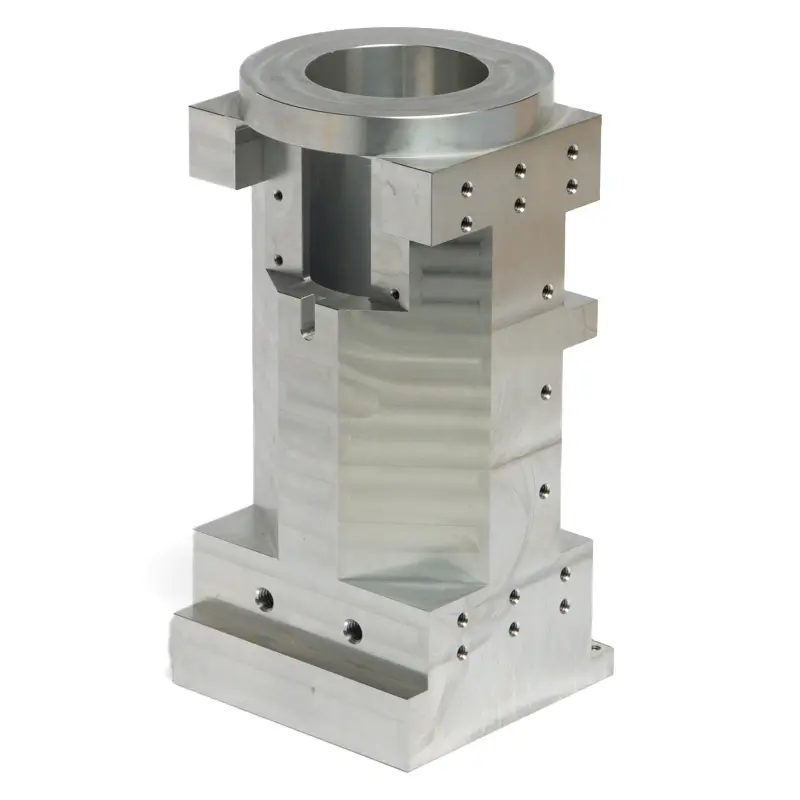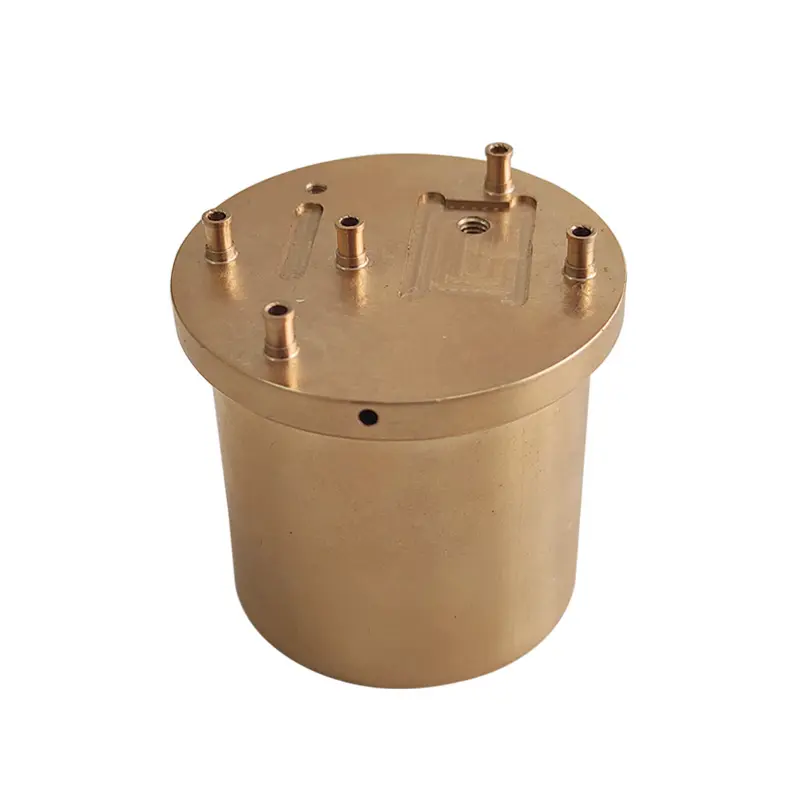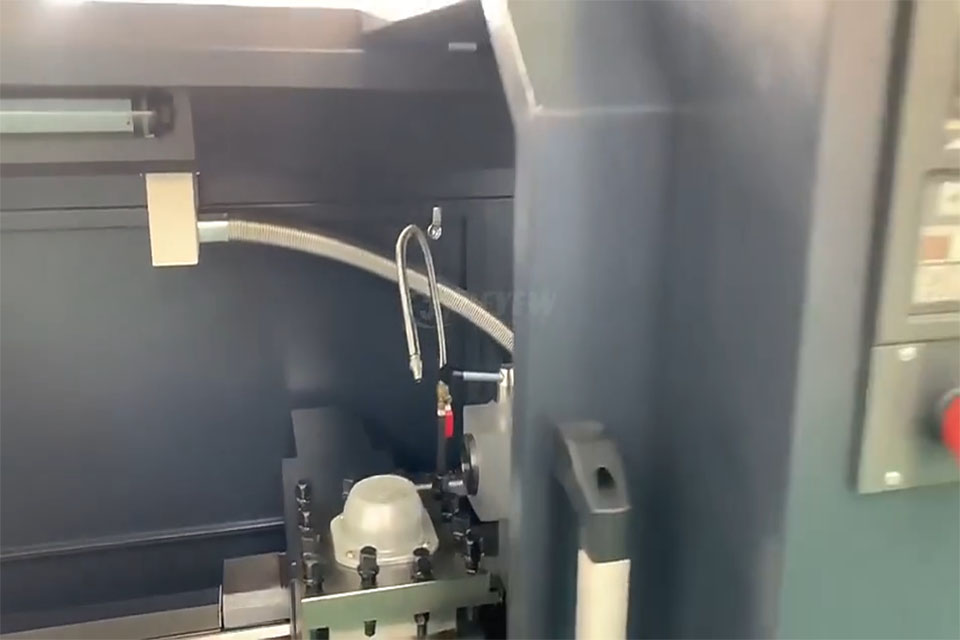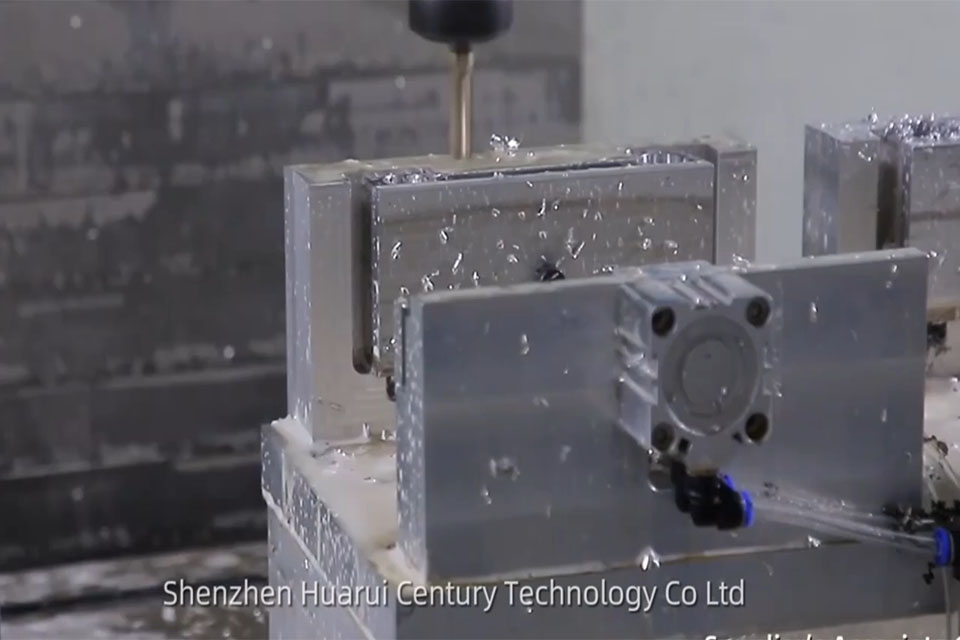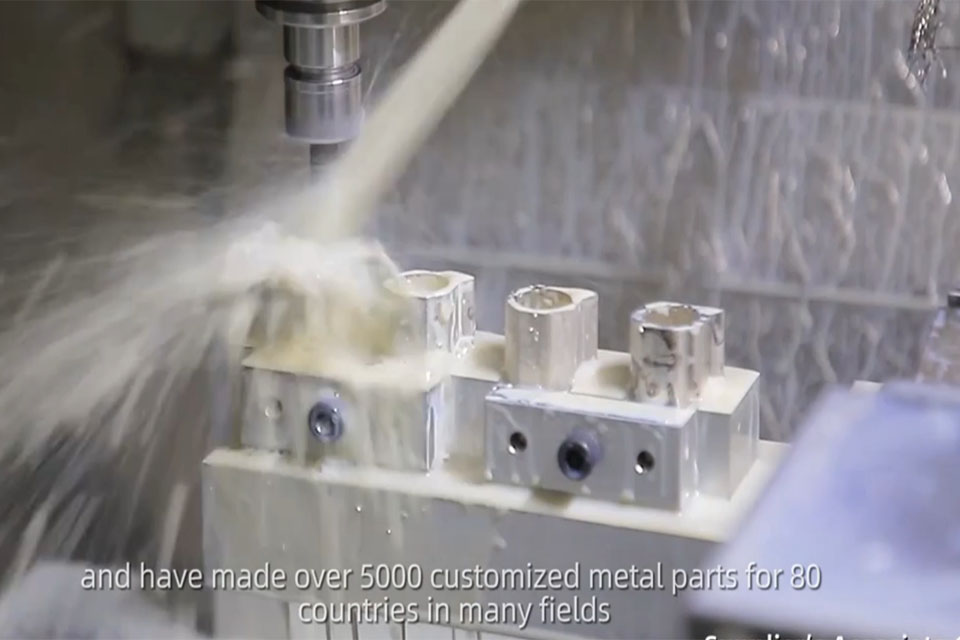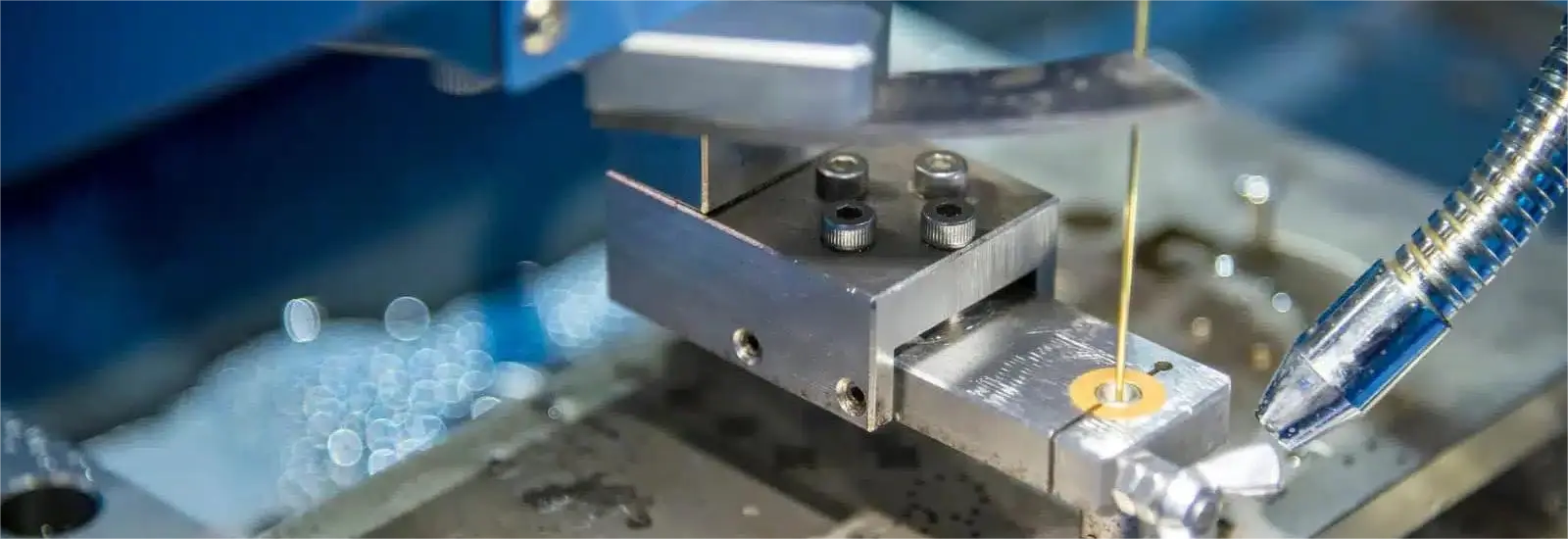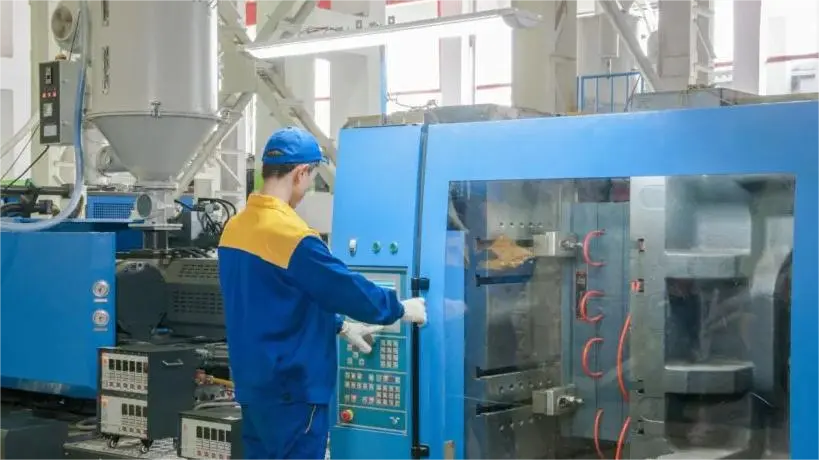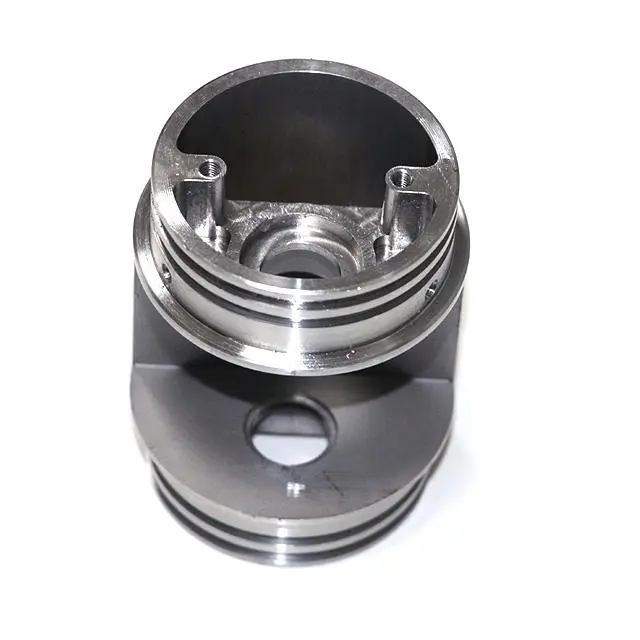
冲压 101:级进模冲压和金属加工入门
目录
导言

What is Stamping and Why is it Important?
冲压 is a cold-forming 生产过程 使用 冲压机 和 stamping die 以改变 钣金 成 理想形状. This process is essential for creating a wide array of 金属部件, from simple brackets to 复杂部件 用于 汽车零部件 and electronic devices. 冲压 is a highly efficient and versatile process that offers precision, repeatability, and cost-effectiveness. As a 数控加工服务 provider, I have witnessed firsthand how critical 冲压 is to our operations and to fulfilling the diverse needs of our clients in industries like Aerospace and Aviation, Automotive, Medical Devices, Electronics, Defense and Military, Industrial Equipment, Consumer Products, Energy and Renewable Energy, Robotics, Construction and Architecture, Tooling and Dies, Food and Packaging, Pharmaceuticals, Heavy Equipment, Custom Projects/Prototyping, Art and Design, Telecommunications, Packaging.
的重要性 冲压 lies in its ability to 生产零件 with high precision and consistency. Metal stamping is capable to create intricate designs and shapes that would be difficult or impossible to achieve with other methods. For instance, in the 车载 业、 冲压 is used to produce body panels, brackets, and other structural components. In 电子学, it helps create connectors, enclosures, and various other small, detailed parts. The ability of 冲压 to work with a variety of metals, including steel, aluminum, and copper, further enhances its importance in manufacturing. Our experience in 数控加工服务 has shown us that 冲压 remains a go-to method for producing reliable and durable 金属零件.
What is Progressive Die Stamping?
级进模冲压 is an advanced 金属成型 technique within the broader 金属冲压 process, utilizing a series of 冲压 stations within a single die set. Each station performs a specific operation, such as 打孔, bending, or coining, on the 金属带 因为它 advances through the die.作为 数控加工服务 provider, we use 级进模冲压 to efficiently produce complex parts with high precision and consistency. This process involves feeding 原金属 通过 progressive stamping die其中 金属 is progressively shaped until it reaches its final form. 级进模冲压 is especially useful for high-volume production runs and intricate parts.
Progressive dies are designed to handle multiple operations, making them ideal for complex geometries and high-precision requirements. Each station in a progressive die performs a specific task, and as the 金属带 moves through, it is gradually formed into the 理想形状. This method is perfect for creating components for the Aerospace and Aviation, Automotive, and Medical Devices industries, where precision is paramount. The progressive die stamping process allows for the creation of features like holes, notches, and bends in a single setup, significantly reducing production time and costs. 级进模冲压 is a highly efficient and cost-effective method for producing 金属部件. It allows for high-speed production while maintaining tight tolerances and consistent quality.
How Does the Progressive Die Stamping Process Work?
"(《世界人权宣言》) progressive die stamping process begins with a coil of 钣金 that is fed into a 冲压机.......。 press 持有 die set, which consists of multiple stations. Each station performs a specific operation on the 金属 as it moves through the 与世长辞. For example, the first station might 猛击 a hole, the second might create a bend, and so on. As the 金属带 progresses, each operation builds upon the previous one until the 金属部分 reaches its final form. Our expertise in 数控加工服务 has allowed us to optimize this process, ensuring each step is executed with precision.
"(《世界人权宣言》) 逐行冲压 process is continuous, meaning that as one 金属部分 is completed, the next one is already being formed. This continuous operation is what makes 级进模冲压 so efficient. The 金属带 被送入 press automatically, and the 冲压件 are ejected at the end of the process. Die maintenance is crucial to ensure the longevity and performance of the stamping die. Regular inspections and maintenance by die maintenance technicians help maintain the quality of the 冲压件. As a company specializing in 数控加工服务, we understand the importance of maintaining our equipment to deliver high-quality results consistently.
What Are the Advantages of Progressive Die Stamping?
Advantages of progressive die stamping include its high efficiency, precision, and cost-effectiveness. 级进模冲压 allows for the rapid production of 复杂部件 with tight tolerances. This is particularly important for industries like Aerospace and Aviation, Automotive, and Medical Devices, where precision is critical. The ability to perform multiple operations within a single die set reduces the need for multiple setups and handling, leading to lower production costs. Additionally, 逐行冲压 minimizes material waste, as the 金属带 is used efficiently.
Another key advantage is the ability to create intricate designs and features in a single 冲压 cycle. This capability is vital for producing 定制金属 components that meet specific design requirements. 级进模冲压 can also handle a wide range of materials, making it a versatile choice for various applications. In our experience providing 数控加工服务, we have found that 级进模冲压 is particularly beneficial for high-volume production runs where consistency and quality are paramount. The process allows for the creation of features like holes, bends, and notches with high precision. The ability to produce complex parts makes it ideal for many stamping applications.
What Types of Stamping Presses Are Used?
有不同的 types of stamping presses 用于 金属冲压, each designed for specific applications. Mechanical presses are commonly used for 级进模冲压 due to their speed and power. These presses use a motor-driven flywheel to store energy, which is then transferred to the ram to perform the 冲压 operation. Hydraulic presses, on the other hand, use fluid pressure to generate force. They are often used for deep drawing and other forming operations that require high force over a longer stroke.
Servo presses are a more advanced type of 冲压机 that offers precise control over the ram’s speed and position. This control is particularly useful for complex 冲压 operations and for working with delicate materials. In our 数控加工服务我们利用各种 presses to meet the diverse needs of our clients. The choice of press depends on factors such as the material being 加盖公章的, the complexity of the part, and the required production volume. Servo presses are becoming increasingly popular due to their flexibility and precision. Different types of presses offer various benefits depending on the specific requirements of the 冲压 operation.
What Are the Common Types of Stamping Dies?
Types of stamping dies include single-station dies, compound dies, and progressive dies. Single-station dies perform one operation per stroke and are used for simpler parts. Compound dies perform multiple operations on a single station, making them more efficient than single-station dies but less so than progressive dies. Progressive dies, as discussed earlier, perform a series of operations across multiple stations, making them ideal for complex and high-volume production. Transfer dies are used for larger parts that need to be moved from one station to another.
每种 与世长辞 has its own advantages and is chosen based on the specific requirements of the 冲压 operation. For example, line dies are used in a series of presses where each 与世长辞 performs a single operation. Progressive dies are preferred for their ability to produce intricate parts efficiently. In our 数控加工服务我们经常使用 progressive dies for their versatility and efficiency. They are particularly useful for creating 金属部件 for industries like 汽车 和 电子产品, where intricate designs are common.
How Many Die Types Are Utilized in Progressive Stamping?
在 逐行冲压, many die types can be utilized within a single die set. Each station in a progressive die can perform a different operation, such as 打孔, bending, coining, or drawing. The number of stations depends on the complexity of the part being produced. A simple part may require only a few stations, while a complex part may require a dozen or more. The ability to combine multiple operations in one 与世长辞 is what makes 级进模冲压 so efficient.
每个 die type within a progressive die set is carefully designed and manufactured to ensure precise operation. 工具钢 is commonly used for making die components due to its hardness and durability. Die design 是 逐行冲压, and it requires expertise in both 金属成型 和 tool and die making. As a provider of 数控加工服务, we work closely with our clients to design and manufacture dies that meet their specific needs. The use of multiple die types 于 逐行冲压 allows us to create highly detailed and accurate parts.
What are the Key Components of a Stamping Die?
A stamping die consists of several key components, each playing a crucial role in the 冲压 process. The die set is the foundation of the 与世长辞 and provides a rigid structure for the other components. It typically consists of an upper and lower shoe, guide pins, and bushings. The 猛击 是 与世长辞 that performs the cutting or shaping operation on the 金属. It is usually made of 工具钢 and is designed to withstand the high forces involved in 冲压.
"(《世界人权宣言》) 与世长辞 block holds the 猛击 及其他 die components and provides the necessary support and alignment. Other important components include strippers, pilots, and gauges, which help to control the movement of the 金属带 and ensure accurate positioning. In our 数控加工服务, we pay close attention to the design and construction of each die component to ensure optimal performance and longevity. Proper die maintenance is also essential to maintain the quality of the 冲压件. The key parts of the die work together to ensure precise and efficient 冲压 业务。
What are some Common Stamping Methods?
There are several common stamping methods 用于 金属加工, each with its own unique characteristics and applications. Blanking is a method where a 猛击 is used to cut a piece of 金属 from a larger sheet. This 空白 is then used for further 冲压 operations. Piercing is similar to blanking but involves cutting holes or other shapes within the 金属板. Bending involves shaping the 金属 by applying force along a straight axis.
Coining is a 冲压 method where the 金属 is compressed between the 猛击 和 与世长辞 to create a specific shape or pattern. Drawing is used to form cup-shaped or box-shaped parts by stretching the 金属 over a 与世长辞. Embossing creates raised or recessed designs on the 金属 surface. In our 数控加工服务, we utilize these stamping methods individually or in combination to create a wide range of 金属部件. Each method offers specific advantages and is chosen based on the desired outcome.
What Industries Benefit from Progressive Die Stamping?
级进模冲压 is used across a 广泛的行业 due to its versatility and efficiency. The 航空航天 行业依赖于 级进模冲压 to produce lightweight, high-strength components. In the 汽车 industry, it is used to create body panels, brackets, and other structural parts. The 医疗设备 industry benefits from the precision and repeatability of 级进模冲压 for manufacturing surgical instruments and implants.
"(《世界人权宣言》) 电子产品 行业用途 级进模冲压 to produce connectors, enclosures, and other small, intricate parts. The 国防和军事 sector utilizes this technology for creating durable and reliable components. Other industries, such as Industrial Equipment, Consumer Products, Energy and Renewable Energy, Robotics, Construction and Architecture, Tooling and Dies, Food and Packaging, Pharmaceuticals, Heavy Equipment, Custom Projects/Prototyping, Art and Design, Telecommunications, Packaging, also benefit from 级进模冲压. As a provider of 数控加工服务, we have experience serving all these industries, delivering high-quality 冲压件 that meet their specific needs. Our expertise in 数控加工 和 激光切割 further enhances our ability to provide comprehensive solutions.
常见问题
What is the difference between progressive die stamping and transfer die stamping?
级进模冲压 involves multiple stations within a single die set, with the 金属带 advancing through each station sequentially. Transfer die stamping involves moving the part from one 与世长辞 to another using a mechanical transfer system. 级进模冲压 is generally more efficient for high-volume production of complex parts.
How do I choose the right stamping method for my project?
选择 冲压 method depends on factors such as the complexity of the part, the material being 加盖公章的, the required production volume, and the desired precision. Consulting with a 数控加工服务 provider like us can help you determine the most suitable method for your specific needs.
What materials can be used in progressive die stamping?
多种材料可用于 级进模冲压, including steel, stainless steel, aluminum, copper, brass, and various alloys. The choice of material depends on the application and the desired properties of the finished part.
What are the tolerances that can be achieved with progressive die stamping?
级进模冲压 can achieve very tight tolerances, often within a few thousandths of an inch. The exact tolerances depend on factors such as the die design, the material being 加盖公章的, and the condition of the 冲压机.
What is the typical lead time for a progressive die stamping project?
一个 级进模冲压 项目的复杂程度不同 与世长辞, the availability of materials, and the production volume. It is best to discuss your specific requirements with a 数控加工服务 provider to get an accurate estimate.
How does die maintenance affect the quality of stamped parts?
Die maintenance is crucial for ensuring the quality and consistency of 冲压件. Regular inspections, cleaning, and sharpening of die components help prevent defects and extend the life of the 与世长辞.
结论
冲压 is a vital 金属加工 process used across many industries.
级进模冲压 offers high efficiency, precision, and cost-effectiveness.
不同 types of stamping presses and dies cater to various applications.
Key components of a stamping die 包括 die set, 猛击和 与世长辞 block.
常见问题 stamping methods include blanking, piercing, bending, coining, drawing, and embossing.
行业,如 Aerospace and Aviation, Automotive, Medical Devices, and Electronics extensively use 级进模冲压.
适当 die maintenance is essential for maintaining the quality of 冲压件.
咨询 数控加工服务 provider can help you choose the right 冲压 method for your project.
通过了解 级进模冲压 and its applications, you can make informed decisions for your manufacturing needs. Whether you require 精密机械加工, 钣金加工或 按需制造, our expertise in 数控加工服务 ensures that we deliver high-quality solutions tailored to your specific requirements. We invite you to contact us to explore how our services, including 组件 and creating detailed 表面处理, can benefit your projects.
评论
出色的产品案例
标签
相关博客
从我们的博客中获取有关 CNC 加工的最新趋势和事实。

